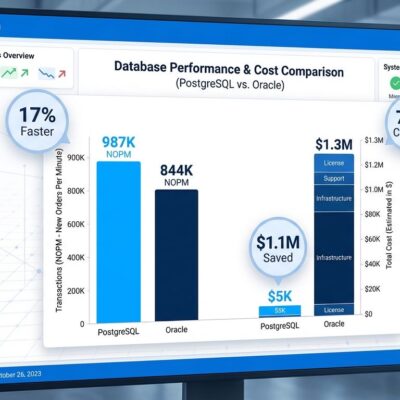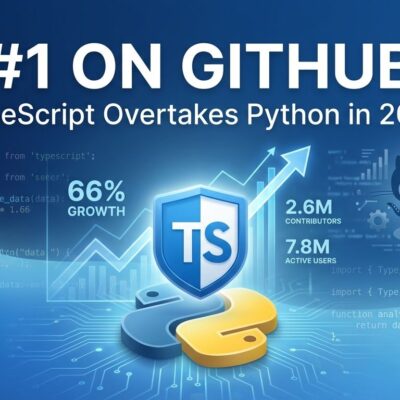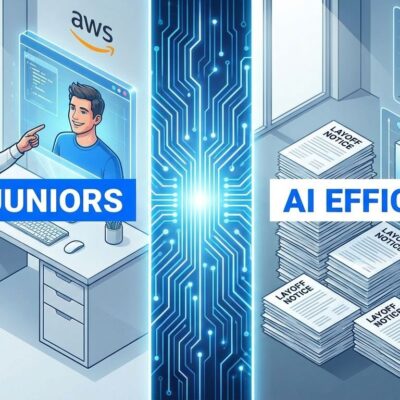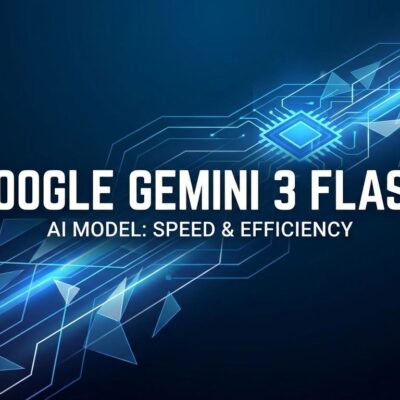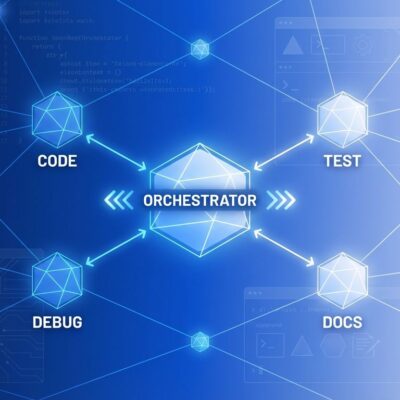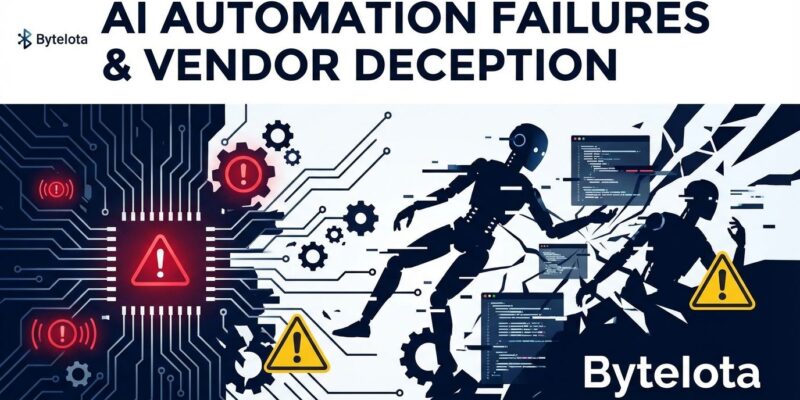
Gartner predicted in June 2025 that over 40% of agentic AI projects will be canceled by the end of 2027, driven by escalating costs, unclear business value, and inadequate risk controls. But the real story isn’t the failure rate—it’s the “agent washing” epidemic. Of the thousands of vendors claiming agentic AI capabilities, Gartner estimates only 130 are real. The rest are rebranding chatbots, RPA tools, and AI assistants without substantial agentic features. If you’re building autonomous AI systems today, you’re likely building a doomed project, and most “agentic” vendor claims are lies.
Only 130 Real Vendors Out of Thousands: The Agent Washing Scam
Gartner estimates only 130 out of thousands of agentic AI vendors actually deliver genuine agentic capabilities. The rest are engaging in “agent washing”—rebranding existing chatbots, robotic process automation tools, and AI assistants as “agentic” without developing real autonomy. This parallels earlier trends like “cloud washing” and “AI washing,” where vendors slapped buzzwords on existing products to ride the hype cycle.
Moreover, Gartner Senior Director Analyst Anushree Verma put it bluntly: “Most agentic AI propositions lack significant value or return on investment, as current models don’t have the maturity and agency to autonomously achieve complex business goals or follow nuanced instructions over time.” Translation: vendors are lying about their products’ capabilities, and enterprises are discovering the hard way that “agentic” is marketing, not reality.
If you’re evaluating agentic AI vendors, assume they’re lying until proven otherwise. This isn’t skepticism—it’s statistical reality. When 99%+ of “agentic” claims are false, trust becomes a liability. Demand proof of autonomous capability, real-world performance benchmarks, and customer references showing actual business value. Otherwise, you’re buying rebranded RPA.
The Performance Cliff: 70% Success on Simple Tasks, <20% on Complex Work
METR’s HCAST benchmark reveals a stark performance cliff. AI agents succeed 70-80% of the time on tasks that take humans less than one hour. However, success drops below 20% on tasks taking more than four hours. For tasks under four minutes, agents achieve almost 100% success. For tasks exceeding four hours, success plummets below 10%.
Moreover, the Remote Labor Index tested the best AI agents on 240 real-world freelance projects across 23 domains—ML engineering, software development, data analysis, content creation. The top performer, Manus, achieved a 2.5% automation rate. Human freelancers earned $143,991 completing these projects. Manus earned $1,720. The median project value was $200, with a median human completion time of 11.5 hours.
This performance cliff explains why 40% of agentic AI projects will be canceled. The hype focuses on automation wins where agents succeed 70-80% of the time—simple, short-duration tasks. Real enterprise value comes from complex, multi-hour work where agents fail 80%+ of the time. Consequently, companies discover this gap after investing millions, then cancel projects when ROI never materializes.
MIT: 95% of Enterprise AI Pilots Fail to Deliver Measurable ROI
MIT’s NANDA initiative found that 95% of enterprise AI pilots deliver zero measurable return, despite companies pouring $30-40 billion into generative AI. Only 5% achieve rapid revenue acceleration. The study analyzed 150 interviews with leaders, surveyed 350 employees, and examined 300 public AI deployments. Success was defined as deployment beyond pilot phase with measurable KPIs and ROI within six months post-pilot.
The data reveals critical failures. Build-in-house projects succeed just 33% of the time compared to 67% for purchasing from specialized vendors. Furthermore, more than half of generative AI budgets are devoted to sales and marketing tools, yet MIT found the biggest ROI in back-office automation—eliminating business process outsourcing, cutting external agency costs, and streamlining operations.
The core problem is a “learning gap.” Standard chatbot solutions like ChatGPT work fine for individuals but can’t adapt to company-wide workflows. Enterprises lack the data foundations, integration capabilities, and governance frameworks that agentic AI requires. Consequently, projects fail not because of bad AI, but because organizations aren’t ready to deploy it.
Why Agentic AI Projects Fail: Missing Data, Integration, and Governance
The 40% cancellation rate isn’t caused by AI technology failure—it’s caused by enterprise infrastructure gaps. Organizations lack unified data foundations, API-enabled systems, and governance frameworks that autonomous AI requires. SiliconANGLE’s analysis identifies three critical gaps: data quality (siloed, unclean data), integration challenges (fragmented legacy systems), and governance deficits (undefined security, compliance, accountability).
Enterprise Technology Research survey data confirms this. Approximately 80% of organizations pay for subscriptions to tools like ChatGPT, 63% use cloud APIs, but only 27% train proprietary language models in-house. Most companies rely on third-party solutions rather than developing autonomous systems. Additionally, 2025 is for learning and laying groundwork, not mass deployment. Full agentic enterprise adoption will likely require a decade of sustained effort, not months.
Developers can’t fix enterprise infrastructure problems with better AI code. If the organization lacks clean data, API-enabled systems, and governance, the agentic AI project will fail regardless of technical excellence. The 40% cancellation rate reflects systemic readiness gaps, not developer skill issues. Therefore, before building agentic AI, assess whether your organization has the infrastructure to support it. If not, the project is doomed from day one.
What Actually Works: Narrow Scope with Human Oversight
Despite the 40% cancellation rate, Gartner predicts 15% of day-to-day work decisions will be made autonomously by 2028, up from 0% in 2024. Additionally, 33% of enterprise software will include agentic AI by 2028, up from less than 1% in 2024. The key difference: narrow-scope task automation with human oversight, not full autonomy.
Appropriate use cases involve complex, dynamic environments like supply-chain optimization and cybersecurity threat response—multi-step, multi-agent collaboration across systems. These aren’t structured, repetitive tasks better served by traditional automation. Anthropic’s guidance recommends starting simple: optimize single LLM calls with retrieval and in-context examples before building agentic systems. Use workflows (predefined code paths) when possible, and reserve agents for open-ended problems where you can’t hardcode a fixed path.
The build vs. buy decision is critical. Purchasing from specialized vendors succeeds 67% of the time versus 33% for in-house builds. Target back-office automation, not sales and marketing tools. Focus on eliminating business process outsourcing and agency costs where ROI is measurable. The hype is dead, but practical AI continues—just not in the form vendors promised.
Key Takeaways
- Gartner predicts 40% of agentic AI projects will be canceled by 2027 due to escalating costs, unclear business value, and inadequate risk controls—but the deeper issue is vendor “agent washing” with only 130 real vendors out of thousands
- MIT research shows 95% of enterprise AI pilots fail to deliver ROI, with in-house builds succeeding just 33% of the time versus 67% for purchased solutions
- METR benchmark reveals a performance cliff: AI agents succeed 70-80% on tasks under one hour but drop below 20% on complex multi-hour work, while Remote Labor Index shows a 2.5% automation rate on real-world freelance projects
- Enterprise infrastructure gaps—missing unified data, fragmented systems, undefined governance—cause failures, not AI technology limitations, with full adoption requiring a decade of sustained effort
- Narrow-scope automation with human oversight works, while full autonomy fails—focus on back-office processes, purchase specialized tools instead of building, and start simple before adding agent complexity




